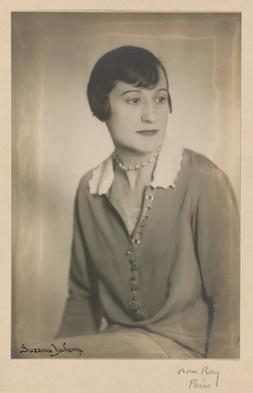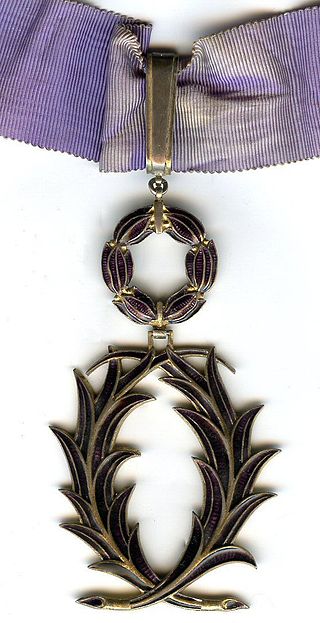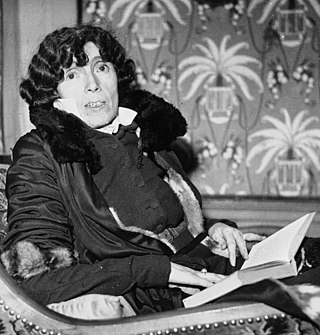
Rouen is a city on the River Seine, in northwestern France. It is the prefecture of the region of Normandy and the department of Seine-Maritime. Formerly one of the largest and most prosperous cities of medieval Europe, the population of the metropolitan area is 702,945 (2018). People from Rouen are known as Rouennais.

Amiens is a city and commune in northern France, located 120 km (75 mi) north of Paris and 100 km (62 mi) south-west of Lille. It is the capital of the Somme department in the region of Hauts-de-France and had a population of 135,429, as of 2021. A central landmark of the city is Amiens Cathedral, the largest Gothic cathedral in France. Amiens also has one of the largest university hospitals in France, with a capacity of 1,200 beds. The author Jules Verne lived in Amiens from 1871 until his death in 1905, and served on the city council for 15 years. Amiens is the birthplace of French president Emmanuel Macron.

Suzanne Duchamp-Crotti was a French Dadaist painter, collagist, sculptor, and draughtsman. Her work was significant to the development of Paris Dada and modernism and her drawings and collages explore fascinating gender dynamics. Due to the fact that she was a woman in the male prominent Dada movement, she was rarely considered an artist in her own right. She constantly lived in the shadows of her famous older brothers, who were also artists, or she was referred to as "the wife of." Her work in painting turns out to be significantly influential to the landscape of Dada in Paris and to the interests of women in Dada. She took a large role as an avant-garde artist, working through a career that spanned five decades, during a turbulent time of great societal change. She used her work to express certain subject matter such as personal concerns about modern society, her role as a modern woman artist, and the effects of the First World War. Her work often weaves painting, collage, and language together in complex ways.

The Ordre des Palmes académiques is a national order bestowed by the French Republic on distinguished academics and teachers and for valuable service to universities, education and science. Originally established in 1808 by Emperor Napoleon as a decoration to honour eminent members of the University of Paris, it was changed into its current form as an order of merit on 4 October 1955 by President René Coty, making it one of the oldest civil honours bestowed by the French Republic.

Marie Bracquemond was a French Impressionist artist. She was one of four notable women in the Impressionist movement, along with Mary Cassatt (1844–1926), Berthe Morisot (1841–1895), and Eva Gonzalès (1847–1883). Bracquemond studied drawing as a child and began showing her work at the Paris Salon when she was still an adolescent. She never underwent formal art training, but she received limited instruction from Jean-Auguste-Dominique Ingres (1780–1867) and advice from Paul Gauguin (1848–1903) which contributed to her stylistic approach.
Paule Marrot was a Parisian textile designer widely known for her textile prints with a flat, two-dimensional, upbeat style — often with a floral pattern. She experienced strong popularity in the U.S. after World War II, worked with Renault to develop the company's textile and color division, and redefined furnishing fabrics in her native country of France.

Jeanne-Henriette Tirman was a French woman painter and printmaker.

Louis Süe was a French painter, architect, designer and decorator. He and André Mare co-founded the Compagnie des arts français, which produced Art Deco furniture and interior decorations for wealthy customers. He also designed buildings and interiors, including the interiors of two passenger liners.

Pierre Bodard was a French painter, best known for his scenes depicting the West Indies.

Louise Hervieu was a French writer, artist, painter, draftsman, and lithographer.
Laurence Broze is a Belgian applied mathematician specializing in statistics and econometrics and particularly in the theory of rational expectations. She is a professor of applied mathematics at the University of Lille in France. From 2012 to 2018 she was president of l'association femmes et mathématiques, a French association for women in mathematics.
Rogi André was a Hungarian-born French photographer and artist. She was the first wife of André Kertész.
Josette Hébert-Coëffin was a French sculptor, medallist and a recipient of a 1937 Guggenheim Fellowship.

Armand-Théophile Cassagne was a French painter, watercolorist, lithographer, and writer; associated with the Barbizon School.

Eugénie Gruyer-Brielman, born Henriette Eugénie Clet was a French painter and designer.

The Society of Modern Women Artists was created in Paris in 1930 as an association for modern women artists. They organized an annual salon from 1931 to 1938. Through these exhibitions they showed modern works of art by French and international women artists, to establish the presence of women in art and to gain recognition from the general public. FAM's exhibitions are considered "a significant force towards putting women artists on a more equal footing" with male artists in France.
Denise Holstein is an Auschwitz concentration camp survivor and Holocaust witness, who was liberated on 15 April 1945. As a Holocaust witness, Holstein tells her story in two books and in a documentary made by a student from the Lycée Corneille in Rouen. For almost fifty years, Holstein never spoke about her life before writing about it. As a Holocaust witness, Holstein visits school children, to describe and share her experiences.
Juliette Lasserre,, was a Swiss-German photographer and literary translator.

Camille Berlin was a French painter.

Henri Ardel was a French writer. She was a recipient of the Prix Botta and of the Ordre des Palmes académiques.














